|
THE
Flora of Manitoba up to the present has been studied but very little, so
that it is not yet possible to present any adequate account of the
Algae, Fungi, Liverworts, or Mosses. The first list of Phanerogamia and
Pteridophyta was compiled for this hand-book by the late Rev. Canon
Burman, whose death occurred on January oOth of this year. Canon Burman,
who was bom in Yorkshire, England, came out to Manitoba whilst still a
young man, and lived in the Province for more than thirty years. During
this time he gradually obtained a unique acquaintance with the flora,
and last year was induced to compile a list of the Phanerogamia and
Pteridophyta. Unfortunately his illness prevented any revision of the
list. Canon Burman was perhaps the only man in Manitoba who possessed a
comprehensive knowledge of the local flora, and the Province could ill
afford to lose him. His death is particularly regretted in view of the
visit of the British Association to Winnipeg.
A
few plants not recorded by Canon Burman were found by Mr. C. W. Lowe
last summer. They have been included in the list, and are marked with an
asterisk.
THE PHANEROGAMIA AND
PTERiDOPHYTA OF MANITOBA
By the late REV. W, A. BURMAN, Of St. John's College, Winnipeg'.
IN presenting the
following list of Manitoba Plants, no claim is made to completeness.
There is a large amount of work yet to be done within the bounds of the
Province as at present constituted; while, with the extension of the
boundaries to Hudson’s Bay, doubtless the flora will be enriched by the
discovery of many sub Arctic species. Most of the Plants included in the
present list were collected by the writer. The remainder have been added
from the records of Dr. G. Macoun and Mr. G. M. Macoun of the Geological
Survey, and chiefly consist of species collected in the extreme
North-Western part of the Province.
The nomenclature
adopted is that used in the catalogue of plants issued by the Geological
Survey of Canada, which gives a very full list of synonyms; for the sake
of economising space, the authors of the nomenclature used have not been
named.
For the study of Plant
distribution, the Province may be divided into four districts:
(1) Eastern District.
This extends from the Eastern shore of the Lake of the Woods almost to
the Bed River, and includes a number of small ’akes which are drained by
the Winnipeg River. The rocks towards the Eastern side of the district
belong to the Laurentian and Huronian formations, but towards the West
they gradually disappear and are succeeded by fine lacrustine deposits
of glacial age.
In the Southern part of
the district occur a number of sandy ridges, which are covered with
“Jack” pine and poplar. The intervening areas are largely occupied by
swamps, in which the prevailing trees are Tamarac, Spruce and Poplar.
Towards the extreme
West the woods become replaced by open, low-lying prairie, which forms
part of the fertile Red River Valley. Further North there is a strip of
park-like country, about 50 miles in width, in which occur occasional
exposures of limestone, as at Tyndall, and deposits of Glacial Drift.
Still further North, the Laurentian system dips beneath the waters of
Lake Winnipeg and forms the Eastern shore.
The Eastern District is
marked by the final occurrence toward the West of a good many species of
plants belonging to Western Ontario, the Winnipeg River valley being
roughly the Westerly limit of their distribution. Here the white and red
pine disappear, also Acer spicatum and Pirus Americana, along with a
number of herbaceous plants affecting rocky uplands. (
(2) The North-Western
District. This district sweeps away from the Red River, North of
Winnipeg, to the North-Western corner of the Province. It is extensively
wooded, its forests consisting of poplar, birch and spruce, accompanied
by willows and bogplants. At intervals it is broken up by extensive
inter-glades of lowlands, which produce a large number of species of
grasses and sedges. Its extreme North-Western division is an interesting
region, in which occur the Riding, Duck and Porcupine Mountains, with
which are associated many lakes and rivers. We here find a good many
plants which also occur towards the East.
(3) The South-Western
District. This includes the rising ground which once provided the
Western shores of the so-called old Lake Agassiz. The various
elevations, such as the Pembina and Turtle Mountains, ultimately became
the first prairie plateau, and present a flora characteristic of the
high prairie regions. In the extreme West of the Province are even found
types belonging to the semi-arid regions further West. Examples are:
Mamillaria vivipara, Opuntia Missouriensis, Artemisia frigida, and
Oxytropis splendcns. The series of ridges known as the Pembina Mountains
are especially interesting, for they produce both lowland and upland
types and also yield a few rarities such as Sanguinaria Canadensis. The
Assiniboine River and its tributaries dram a large part of this plateau,
and the valleys, particularly that of the Assiniboine—deeply cut through
the elevated prairie—furnish a varied and profitable field for
systematic work.
(4) The Central
District. This covers the alluvial region of the Red River Valley.
Included within it are the low-lying lands on both sides of the Red
River, which extends Westward up to the foot of the Pembina Mountains
and the other elevations to the North of it. This district has its
characteristic flora, a marked feature of which is the large number of
species of Compositae. Winnipeg comes within this district. A few miles
North of the city is the limestone ridge known as Stony Mountain,
Although its elevation is inconsiderable, the ;oeky substratum furnishes
conditions favourable to the growth of a number of species differing
greatly from those on the plain a few feet below. Among them are some
which are not common in any other part of the Province, such as Gerardia
tenuifolia, Boltonia asteroides, Boute-loua racemosa, and the curious
little fern Pellaea atro-purpurea, which is found on the exposed
limestone boulders. Within the bounds of the City of Winnipeg is located
the Northern limit for the occurrence of Amorpha Gruticosa, which, so
far as the writer knows, .s confined entirely to the Red River Valley,
down which d has travelled from Dakota.
It only remains to be
added that beyond the Orders covered by the accompanying list very
little work has been done in collecting and recording the plants of
Manitoba. The Thallophyta and Bryophyta have been practically left
untouched, and offer an inviting field for future investigation.
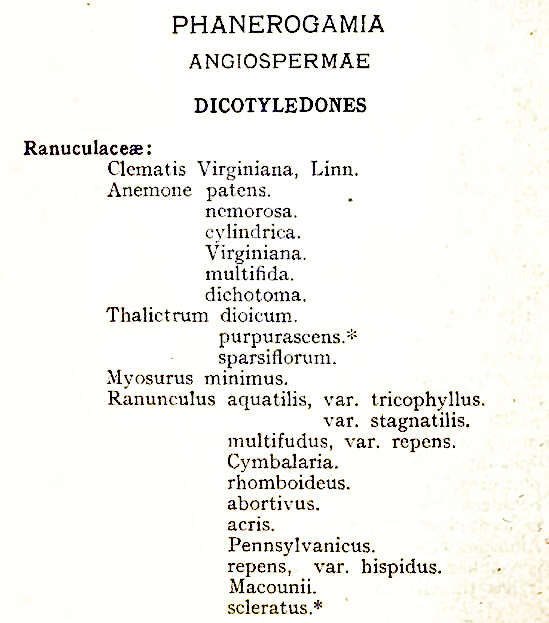
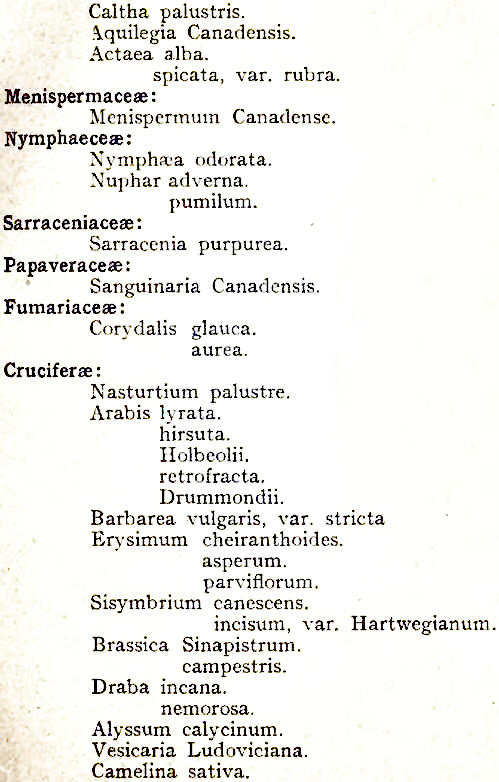
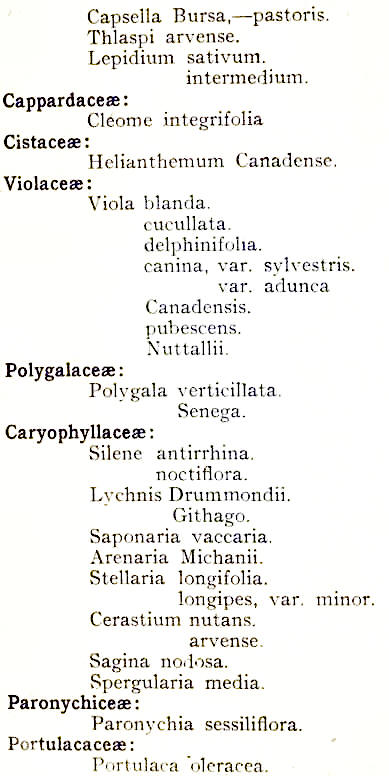
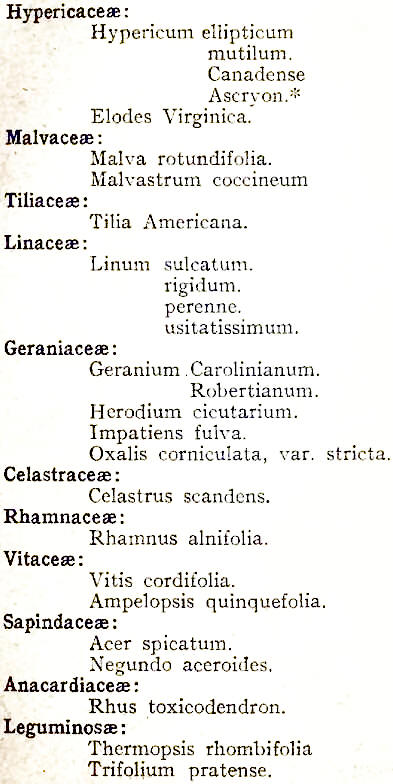

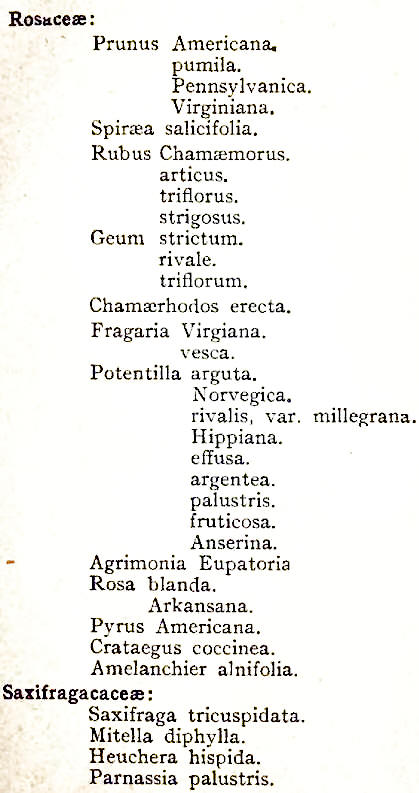
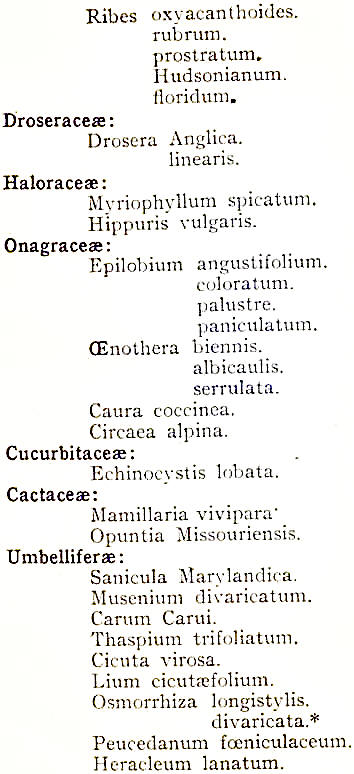
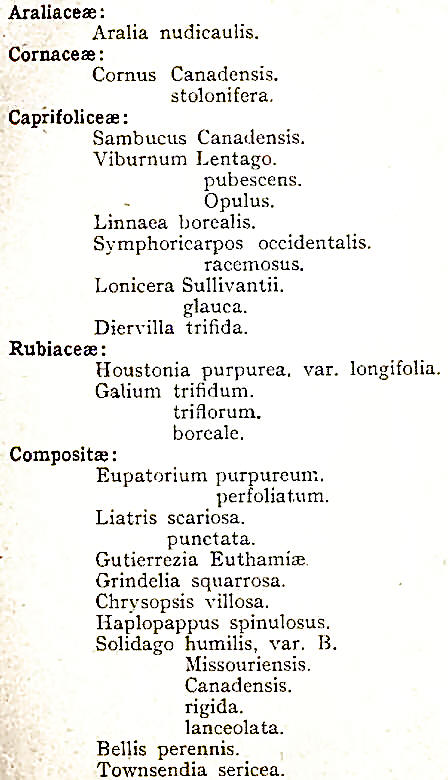



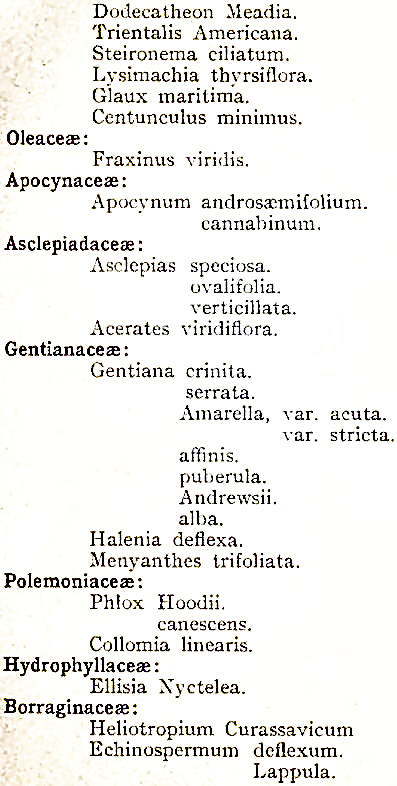
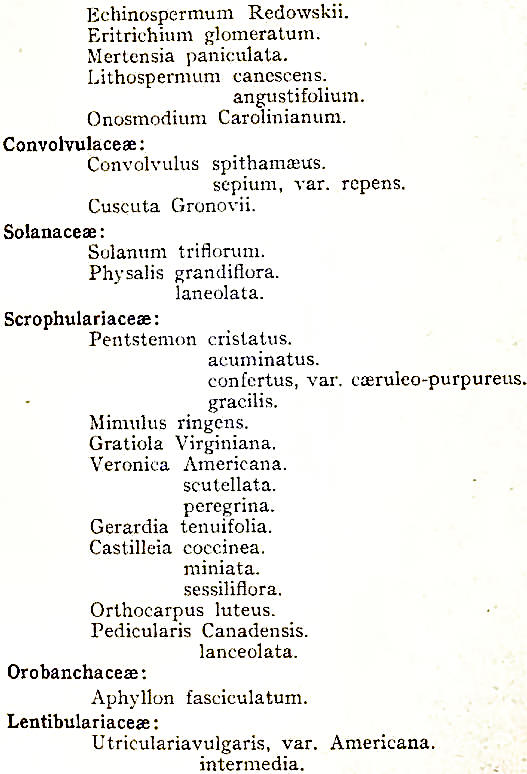


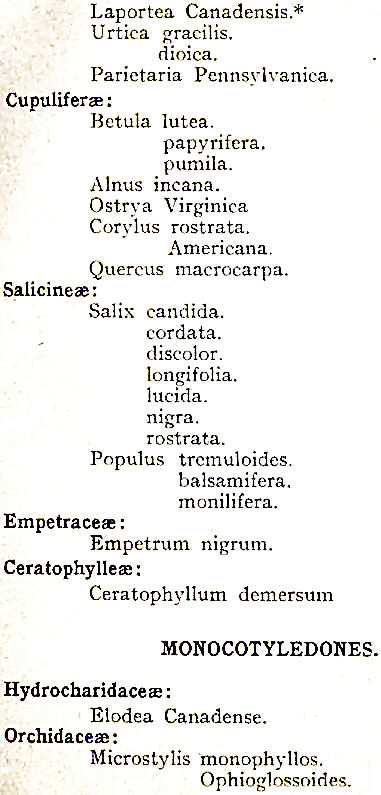
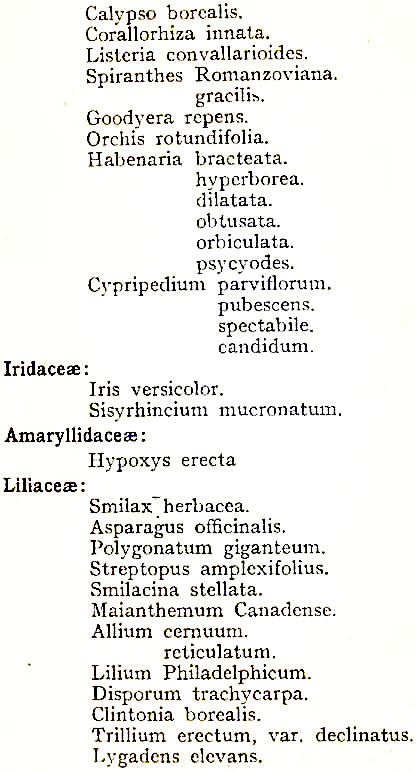
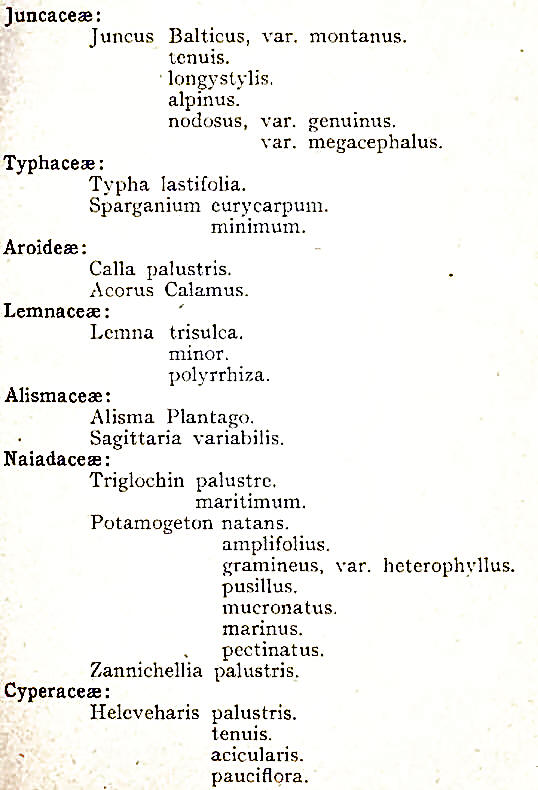


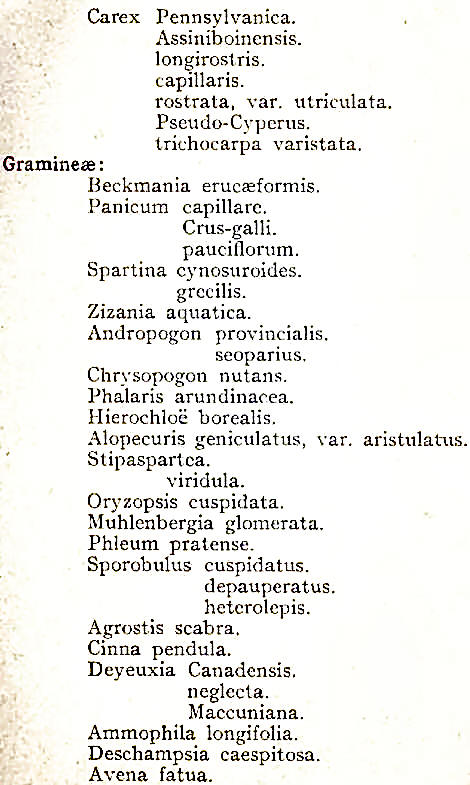
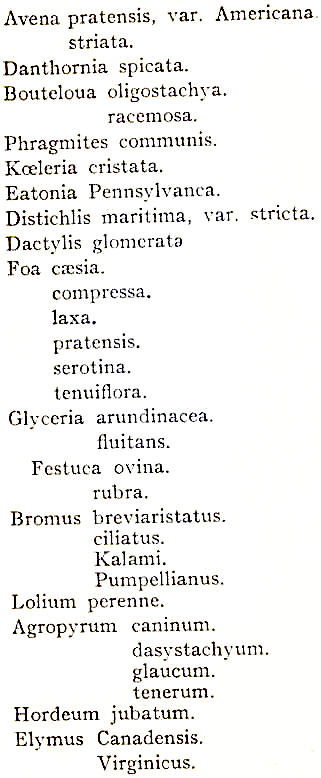
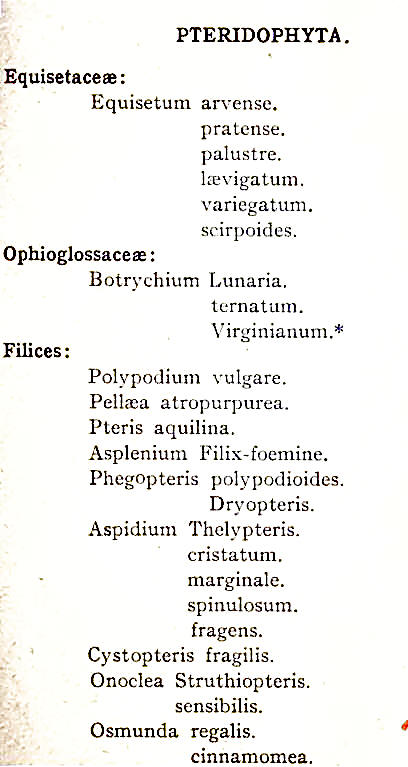
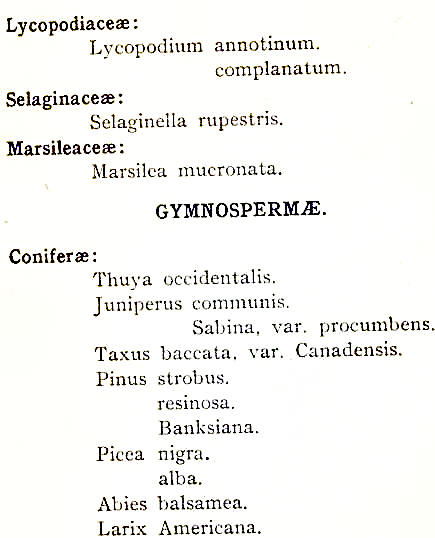
|
